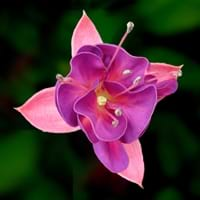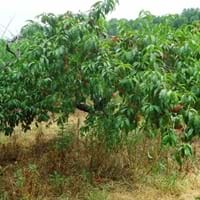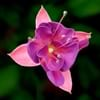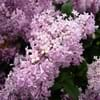Life Span
Perennial
Perennial
Type
Tender Perennial
Fruit
Types
Fuchsia Decidua, Fuchsia Fulgens, Fuchsia Splendens, Fuchsia Microphylla
Freestone, Clingstone
Habitat
Forest edges, Woods
Temperate Regions, Warmer regions
USDA Hardiness Zone
9-10
5-9
Sunset Zone
16, 17, 23, 24
Not Available
Habit
Arching/Fountain-shaped
Upright/Erect
Flower Color
Orange Red
Pink
Flower Color Modifier
Not Available
Bicolor
Fruit Color
Not Available
Yellow, Red, Pink, Peach
Leaf Color in Spring
Purple, Dark Green
Green
Leaf Color in Summer
Purple, Dark Green
Green
Leaf Color in Fall
Purple, Dark Green
Green
Leaf Color in Winter
Unknown
Light Green
Leaf Shape
Long Linear
Elliptic
Plant Season
Spring, Summer, Fall, Winter
Spring, Summer, Fall
Sunlight
Full Sun, Partial Sun, Partial shade
Full Sun
Growth Rate
Medium
Medium
Type of Soil
Clay, Loam, Sand
Loam, Sand
The pH of Soil
Acidic, Neutral
Acidic, Neutral, Alkaline
Soil Drainage
Average
Well drained
Bloom Time
Indeterminate
Spring
Tolerances
Drought
Drought
Where to Plant?
Container, Ground, Pot
Container, Ground, Pot
How to Plant?
Seedlings, Stem Planting, Transplanting
Grafting
Plant Maintenance
Medium
Medium
Watering Requirements
Requires regular watering
Requires regular watering, Requires watering in the growing season
In Summer
Lots of watering
Lots of watering
In Spring
Moderate
Moderate
In Winter
Average Water
Average Water
Soil pH
Acidic, Neutral
Acidic, Neutral, Alkaline
Soil Type
Clay, Loam, Sand
Loam, Sand
Soil Drainage Capacity
Average
Well drained
Sun Exposure
Full Sun, Partial Sun, Partial shade
Full Sun
Pruning
Prune in spring, Prune lower leaves, Remove dead or diseased plant parts, Remove deadheads, Remove shoots
Prune every year, Prune to stimulate growth, Remove damaged leaves, Remove dead branches, Remove dead leaves, Remove hanging branches
Fertilizers
All-Purpose Liquid Fertilizer
Compost, fertilize in spring, fertilize in summer, Nitrogen, Phosphorous
Pests and Diseases
Rhizoctonia Root Rot, Rust
Bacterial Canker, Bacterial leaf spot, Crown gall, Leaf curl, Red blotch, Rust, Scab
Plant Tolerance
Drought
Drought
Flower Petal Number
Single
Single
Foliage Texture
Medium
Medium
Foliage Sheen
Matte
Glossy
Attracts
Hummingbirds
Birds
Allergy
Asthma, Hay fever
Avoid during Pregnancy
Aesthetic Uses
Showy Purposes
Not Available
Beauty Benefits
Not Available
Good for skin and hair
Environmental Uses
Air purification
Air purification, Food for animals, Food for birds, Food for insects, Nesting sites for birds, Prevent Soil Erosion
Medicinal Uses
Not Available
Cancer, Diabetes, Heart problems, Nutrients, Skin Disorders
Part of Plant Used
Flowers, Fruits
Fruits
Other Uses
Not Available
Cosmetics, Used As Food, Used for its medicinal properties
Used As Indoor Plant
Yes
No
Used As Outdoor Plant
Yes
Yes
Garden Design
Bedding Plant, Container, Feature Plant, Foundation, Hedges, Tropical
Fruit / Fruit Tree
Botanical Name
FUCHSIA triphylla
PRUNUS persica 'Saturn'
Common Name
Fuchsia
Donut Peach, Peach, Saturn Peach, Yellow Freestone Peach
In Hindi
फ्यूशिया
डोनट पीच
In German
Fuchsie
Donut Pfirsich
In French
Fuchsia
Donut Peach
In Spanish
Fucsia
Donut Peach
In Greek
φουξία
ντόνατ Ροδάκινο
In Portuguese
Fúcsia
Donut Peach
In Polish
Fuksja
Donut Peach
In Latin
Fuchsia
Donut Peach
Phylum
Magnoliophyta
Magnoliophyta
Class
Dicotyledonae
Magnoliopsida
Family
Onagraceae
Rosaceae
Clade
Angiosperms, Eudicots, Rosids
Angiosperms, Eudicots, Rosids
Tribe
Not Available
Not Available
Subfamily
Not Available
Cetoniinae
Number of Species
Not Available
Difference Between Fuchsia and Donut Peach
If you are confused whether Fuchsia or Donut Peach are same, here are some features about those plants to help you choose better. Many people think that these two plants have the same characteristics, but one can see Fuchsia and Donut Peach Information and learn more about it. Fertilizers required for proper growth of Fuchsia are All-Purpose Liquid Fertilizer, whereas for Donut Peach fertilizers required are Compost, fertilize in spring, fertilize in summer, Nitrogen and Phosphorous. Hence, one should know the basic difference between Fuchsia and Donut Peach if you are planning to have them in your garden to enhance its beauty.
<
Flowering PlantsImportance of Fuchsia and Donut Peach
Want to have the most appropriate plant for your garden? You might want to know the importance of Fuchsia and Donut Peach. Basically, these two plants vary in many aspects. Compare Fuchsia and Donut Peach as they differ in many characteristics such as their life, care, benefits, facts, etc. Every gardener must at least have the slightest clue about the plants he wants to plant in his garden. Compare their benefits, which differ in many ways like facts and uses. The medicinal use of Fuchsia is Not Available whereas of Donut Peach is Cancer, Diabetes, Heart problems, Nutrients and Skin Disorders. Fuchsia has beauty benefits as follows: Not Available while Donut Peach has beauty benefits as follows: Not Available.
Compare Facts of Fuchsia vs Donut Peach
How to choose the best garden plant for your garden depending upon its facts? Here garden plant comparison will help you to solve this query. Compare the facts of Fuchsia vs Donut Peach and know which one to choose. As garden plants have benefits and other uses, allergy is also a major drawback of plants for some people. Allergic reactions of Fuchsia are Asthma and Hay fever whereas of Donut Peach have Avoid during Pregnancy respectively. Having a fruit bearing plant in your garden can be a plus point of your garden. Fuchsia has no showy fruits and Donut Peach has showy fruits. Also Fuchsia is flowering and Donut Peach is not flowering . You can compare Fuchsia and Donut Peach facts and facts of other plants too.





